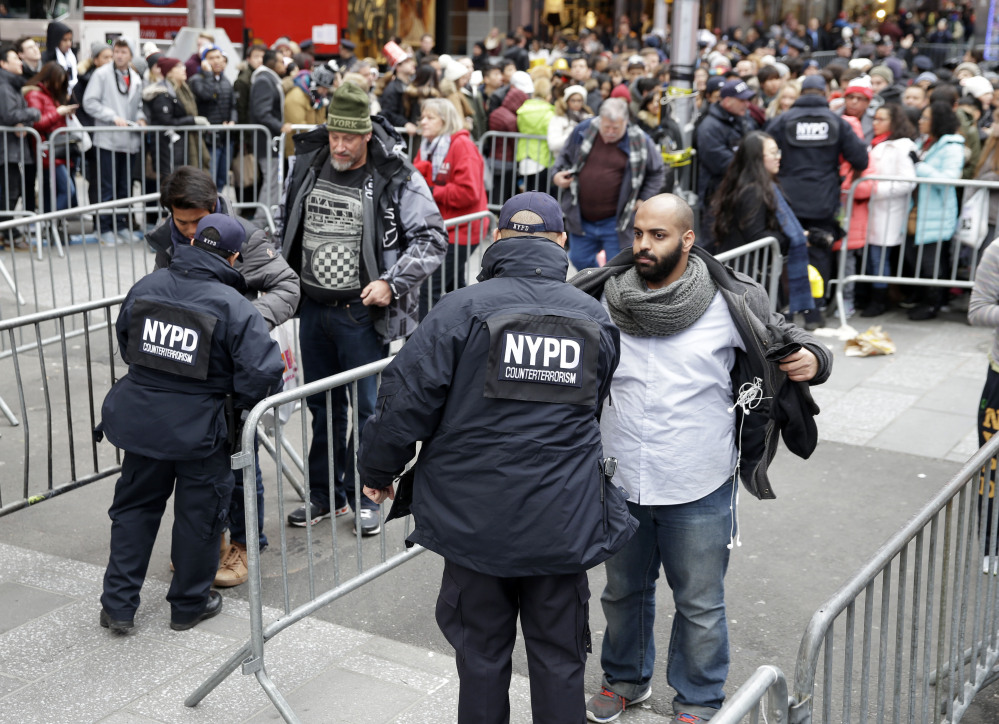On Sept. 11, 2001, 19 foreign-born Arab men attacked the United States, and in doing so became the face of terrorism for Americans. Sixteen-plus years later, that face has changed, though in most cases, our perception has not.
The danger now comes not from a trained team of foreign operatives backed by a well-funded organizational structure, but from American citizens and residents radicalized here in small groups and ultimately acting alone. It comes from perpetrators who defy stereotype and exhibit few helpful warning signs. Though rare, it is frightening in its randomness, and in its confirmation that there are people in this country who wish their fellow Americans harm.
That’s why the FBI considers homegrown Islamic extremists the top domestic terror threat for 2018, according to reports of congressional committee testimony from Director Christopher Wray.
Attacks in San Bernardino, California, Orlando, Florida, Fort Hood, Texas, and New York City all were perpetrated by people who were either citizens or had been in this country — legally — for some time. They were radicalized here, in small groups or over the internet. There was no epic attack being planned between operatives in different countries. There were no large meetings for agents to track, or extensive communications to eaves drop on. No travel ban would have kept them out.
These were just people who decided they wanted to strike a blow for their twisted idea of jihad, and used the resources around them to do it.
The attackers had precious little in common, so there is little use in looking for common traits to identify the next attacker. It’s not religion — there are millions of peaceful Muslims in the United States. It’s not extremism — the FBI every year investigates thousands of people who dabble in extremist views — which are protected by the First Amendment — and find nothing criminal, and those that end up perpetrating violence hardly stand out from those who don’t.
And although it can be a factor, lack of assimilation also is not a clear indicator. The shooters in San Bernardino, for instance, were married with a child, and were solidly middle class.
No, attackers have been male and female, urban and rural, with a wide range of ages, ethnicities and geographical origins.
That’s why these attacks are so hard to stop, and why it might be more helpful for investigators to consider methodology rather than category. Omar Mateen, the Orlando nightclub shooter, and Dylann Roof, who killed nine people at a historically black church in South Carolina, may have more in common with each other than with Muslim extremists and white supremacists, respectively. Many men are angry, isolated and disappointed, so why with these men, with such different pasts, did it turn to violence?
Indeed, following the Sept. 11 attacks, nearly 40 percent of terrorism deaths have come from domestic motivations. In 2017, 17 Americans died from attacks by Islamic extremists, the same number who were killed by far-left and far-right domestic terrorists combined.
If it’s the ultimate toll inflicted on Americans that matters, then elements of all those groups deserve scrutiny — an Islam-centered approach would miss people like Roof, or the man who killed 58 and wounded hundreds more in Las Vegas.
And there’s the question of what to with the susceptible young Muslim Americans who are drawn to extremism. They are not lost causes — a teen’s ability to become obsessed with a subject is matched only by his ability to move on quickly. Yet we know a small number will become violent if left unchecked.
The answers may lie outside of anti-terrorism. What do we know about suicide, or about gun and gang violence, that can help us address the virus of extremism? What programs in education, health and employment can help turn someone around?
All of this is to say that the terrorism threat isn’t easily categorized. Taking it on is a challenge. And in doing so, we shouldn’t lose our perspective, or become captives to our fear or prejudices.
Copy the Story LinkSend questions/comments to the editors.



Success. Please wait for the page to reload. If the page does not reload within 5 seconds, please refresh the page.
Enter your email and password to access comments.
Hi, to comment on stories you must . This profile is in addition to your subscription and website login.
Already have a commenting profile? .
Invalid username/password.
Please check your email to confirm and complete your registration.
Only subscribers are eligible to post comments. Please subscribe or login first for digital access. Here’s why.
Use the form below to reset your password. When you've submitted your account email, we will send an email with a reset code.